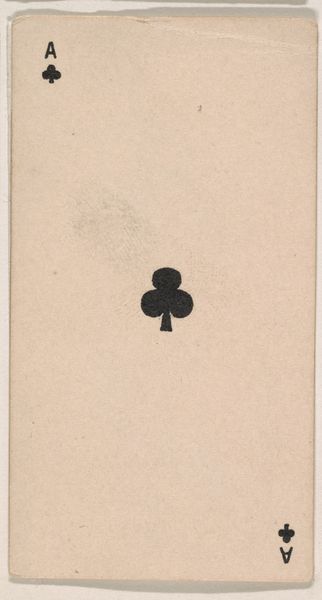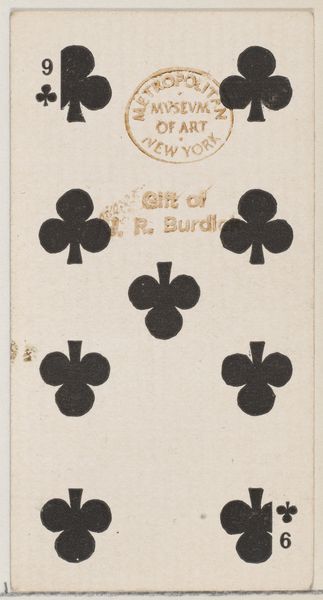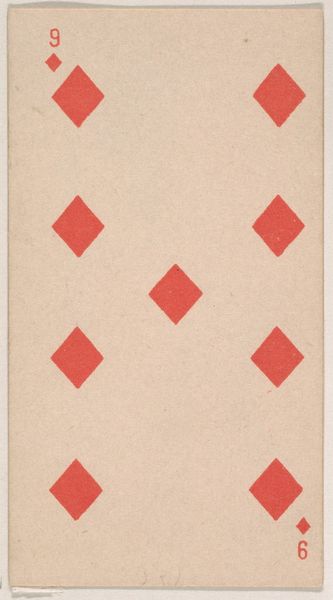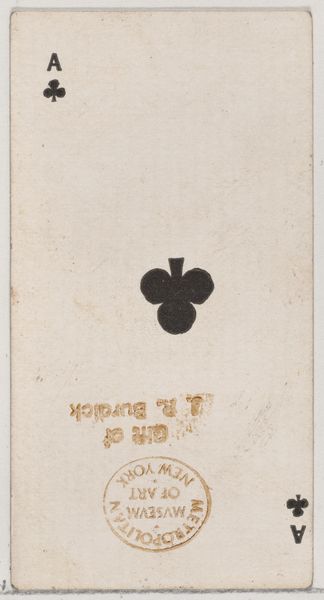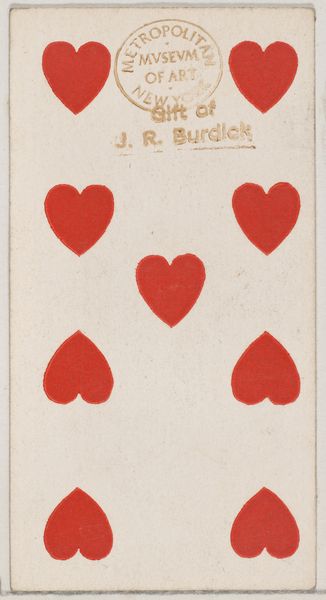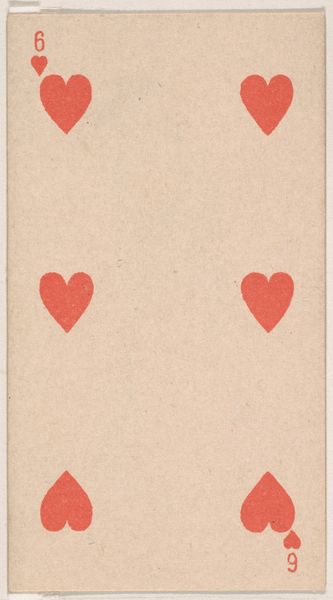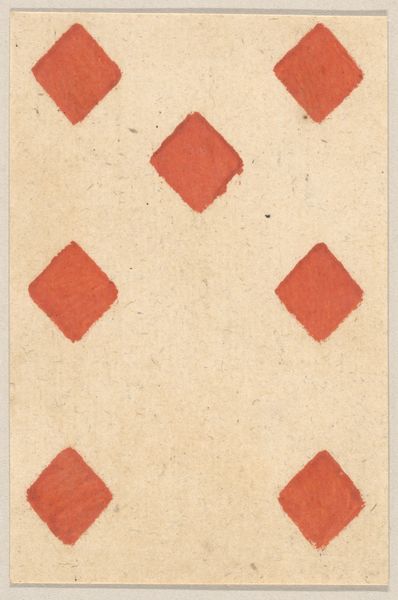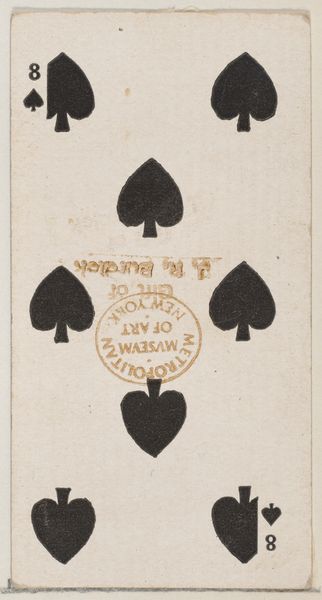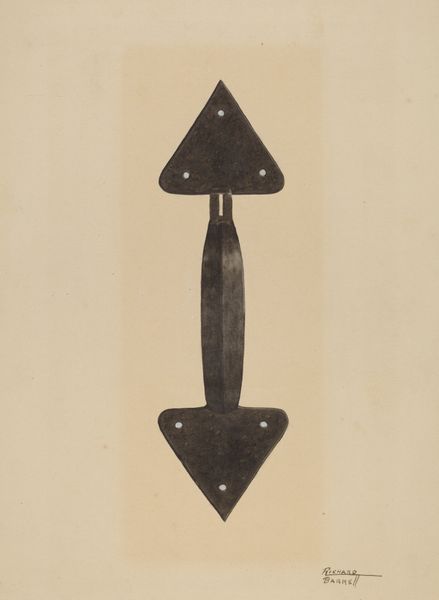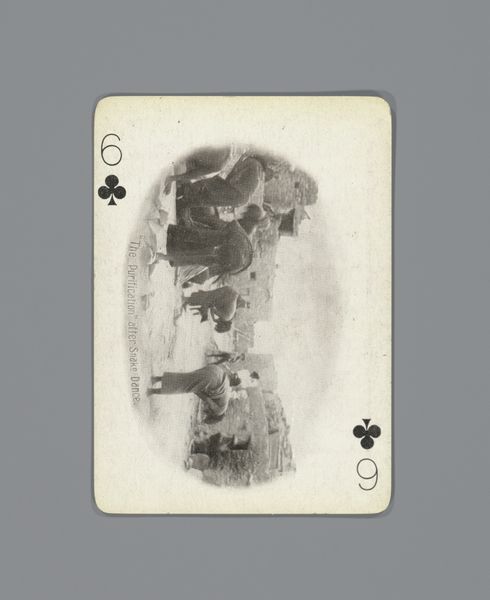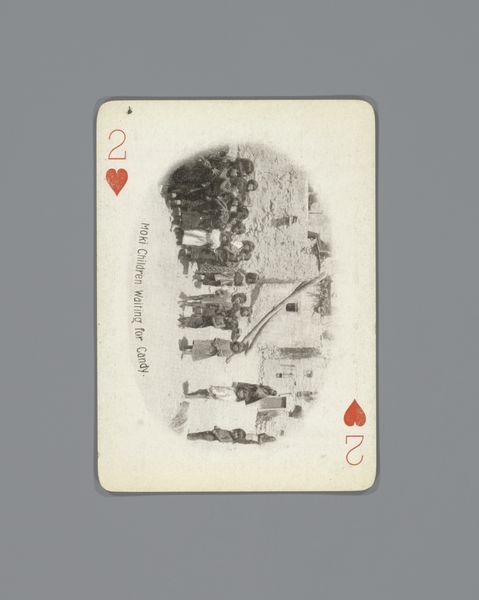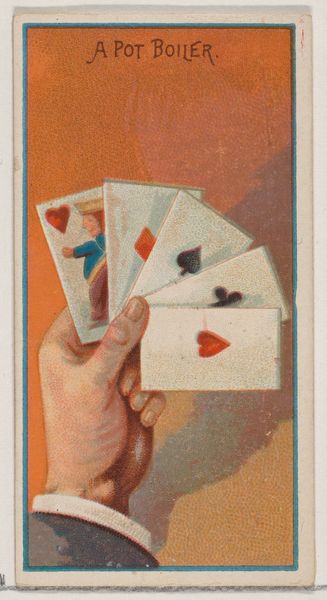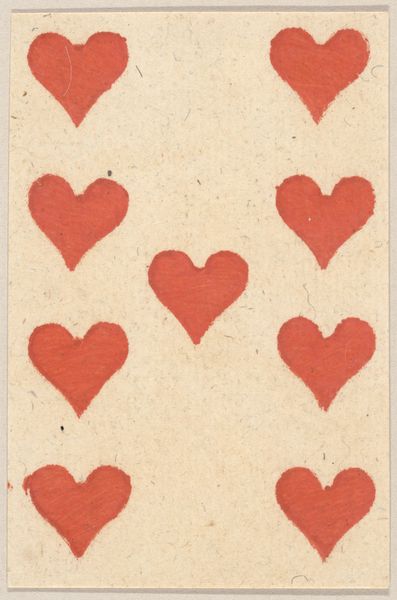
Seven of Clubs, from the Transparent Playing Cards series (N220) issued by Kinney Bros. 1888
0:00
0:00
drawing, graphic-art, print
#
drawing
#
graphic-art
# print
#
geometric
#
line
Dimensions: Sheet: 2 3/4 × 1 1/2 in. (7 × 3.8 cm)
Copyright: Public Domain
Editor: Here we have Kinney Brothers' "Seven of Clubs," a playing card from their Transparent Playing Cards series, dating back to 1888. It's deceptively simple, just graphic art on a small scale. What should we be paying attention to? Curator: It’s interesting how something as ubiquitous as a playing card, produced en masse, intersects with artistic expression and material culture. Kinney Brothers, primarily a tobacco company, used these cards as promotional items. What does it tell us about the era and consumption? Editor: So it's more than just a game piece? It’s tied to marketing and a very specific product, tobacco? Curator: Exactly. Think about the labor involved: from sourcing the paper and ink, to the printing process itself. These weren’t precious objects, but their creation involved a complex system of production. The cards circulated widely; how did they influence design and visual culture at the time? How does this blur the line between art and commercial design? Editor: I hadn't considered that aspect. I was focused on the minimalist aesthetic of the clubs themselves, and the arrangement on the card. But thinking about it as a manufactured object, part of a larger industrial process… Curator: Precisely! Consider the distribution networks needed to get these cards into the hands of consumers. Were they distributed equally across different socioeconomic classes, or were they targeted to specific demographics? Editor: That gives me a completely new way to appreciate even the most simple, everyday artworks. Thank you for expanding my understanding. Curator: And thank you. It is crucial to constantly re-evaluate the boundaries between art, craft, and commercial production. This benefits our experience with artworks.
Comments
No comments
Be the first to comment and join the conversation on the ultimate creative platform.
